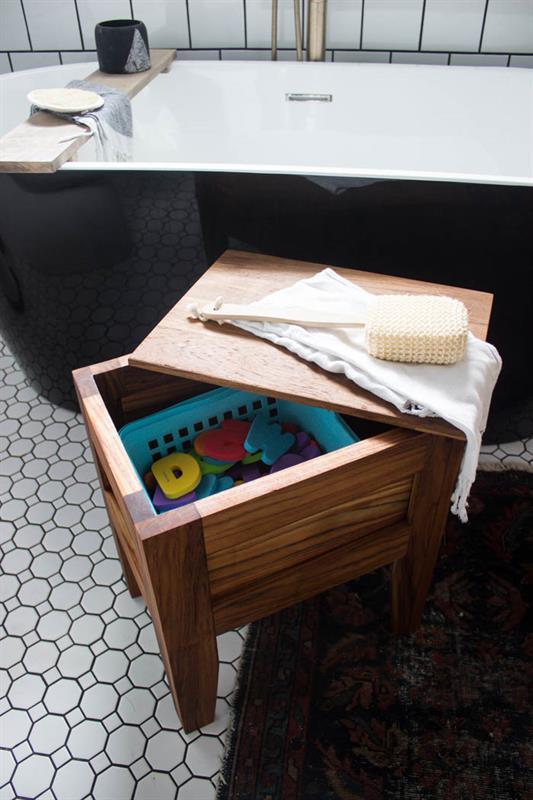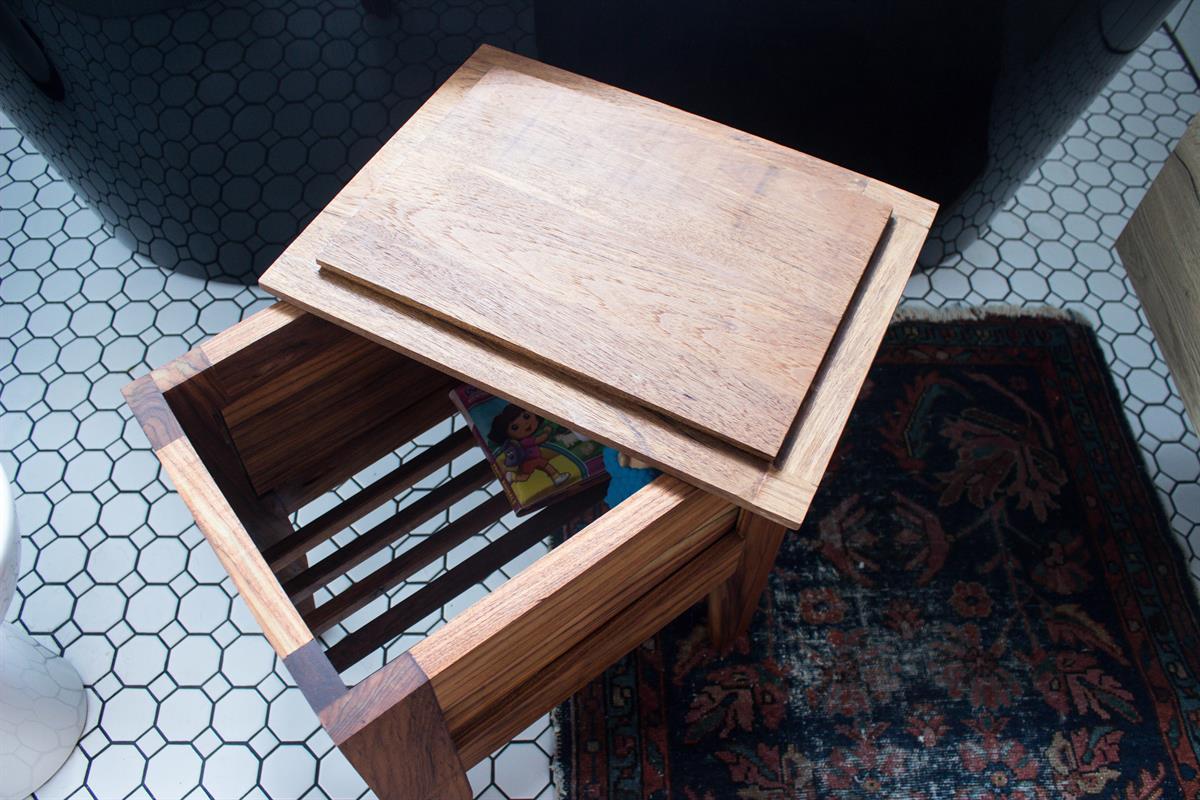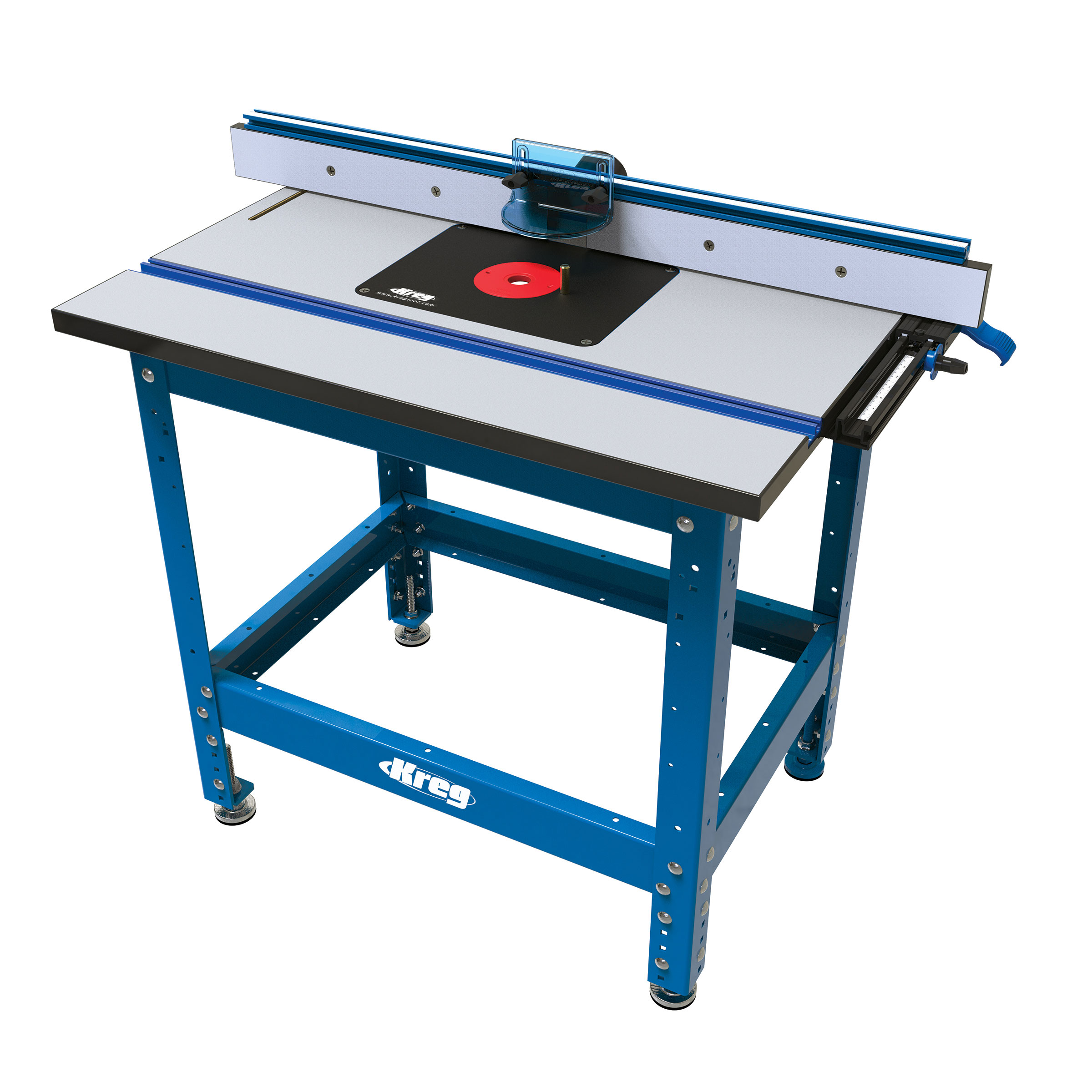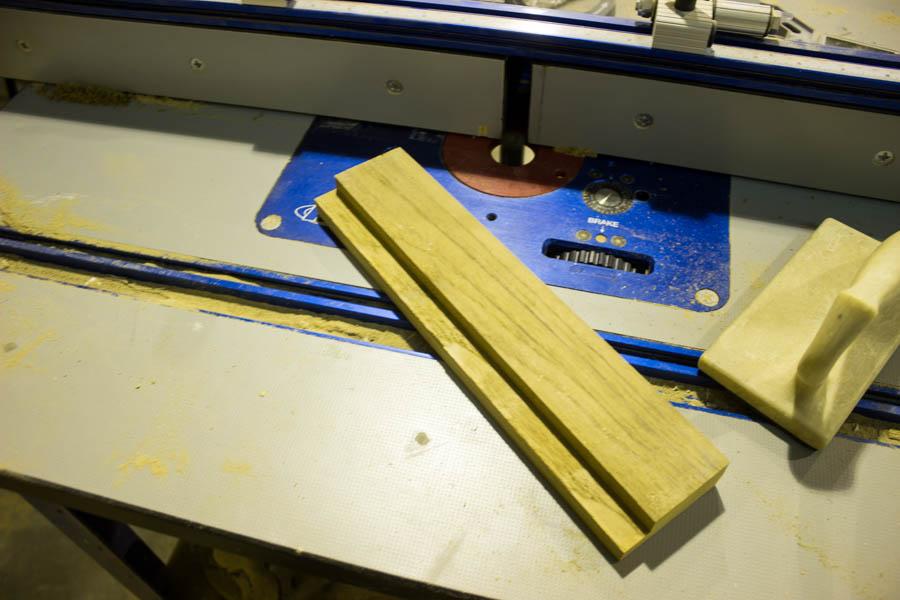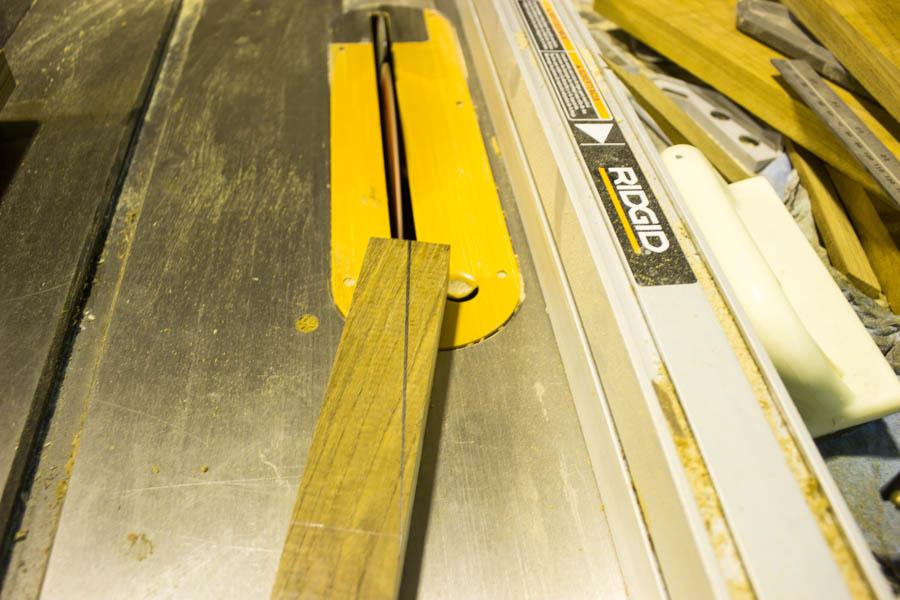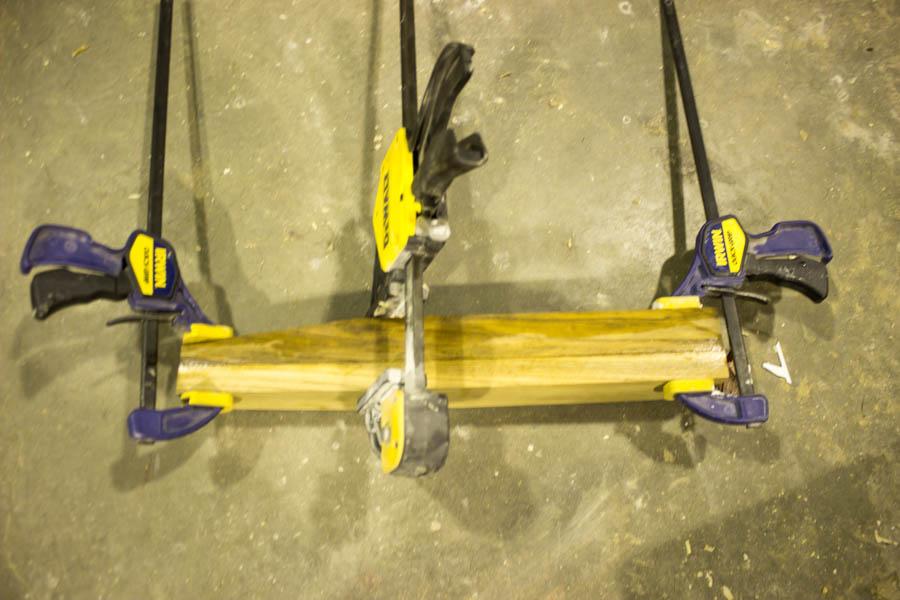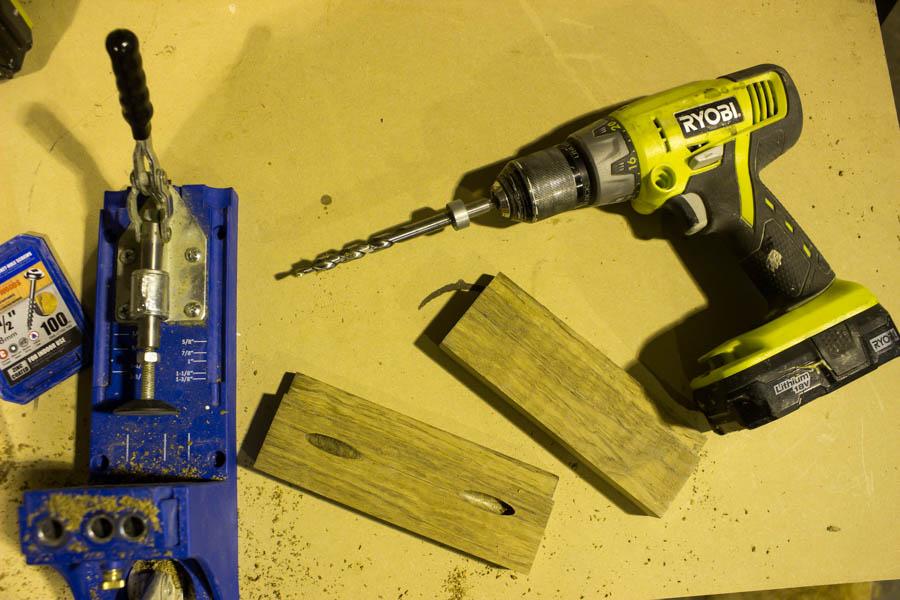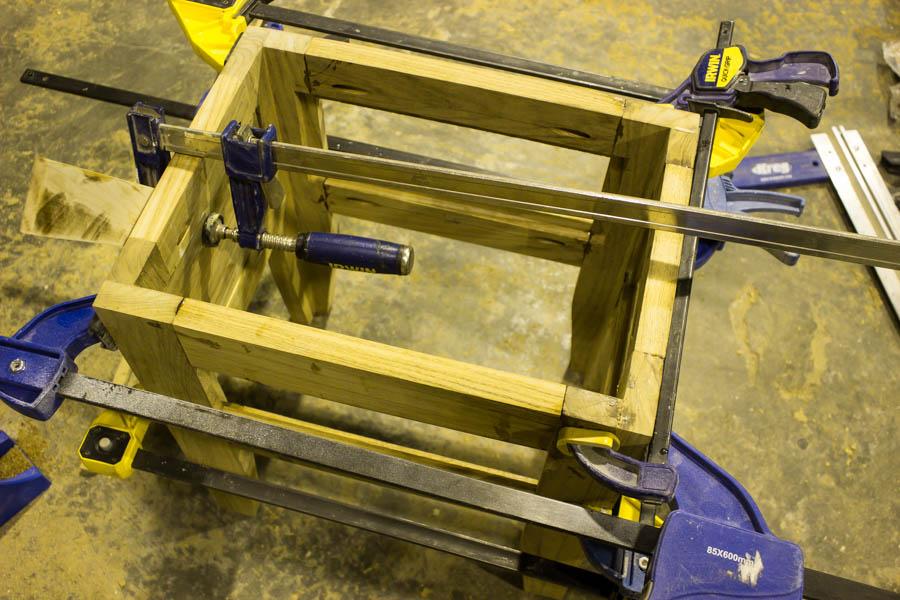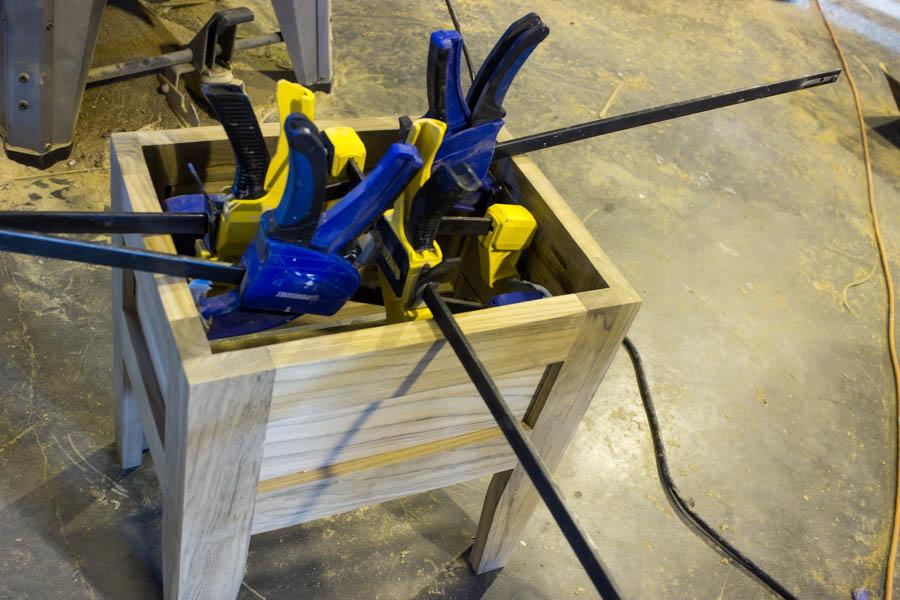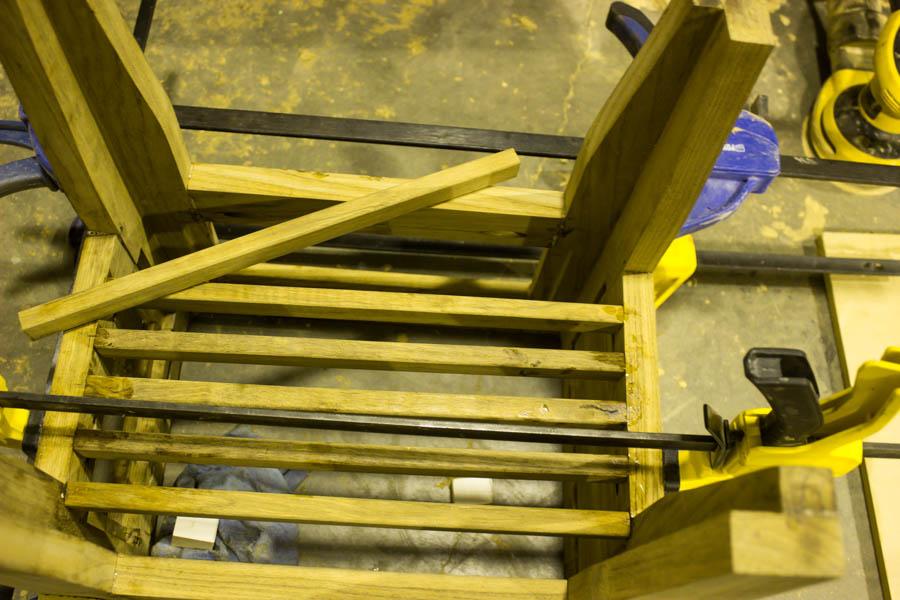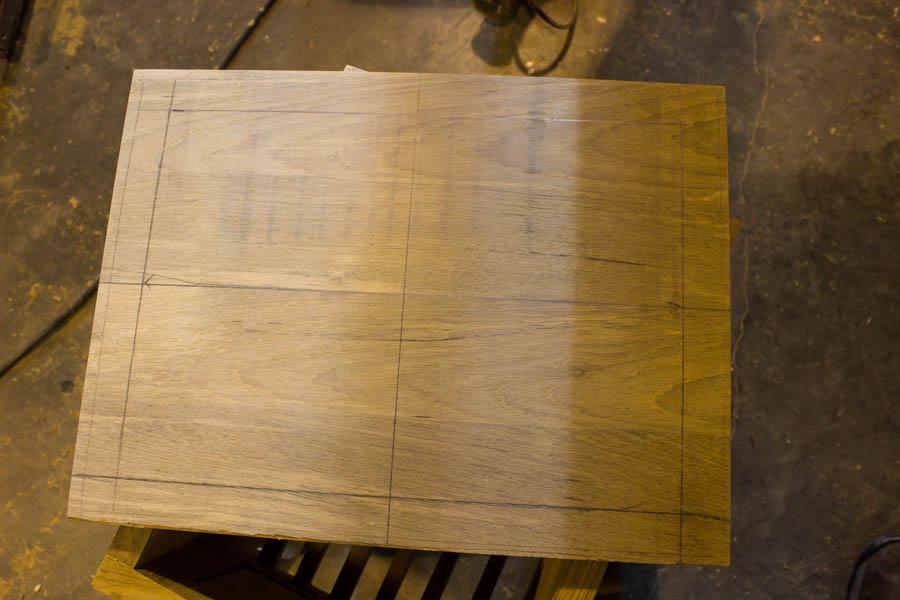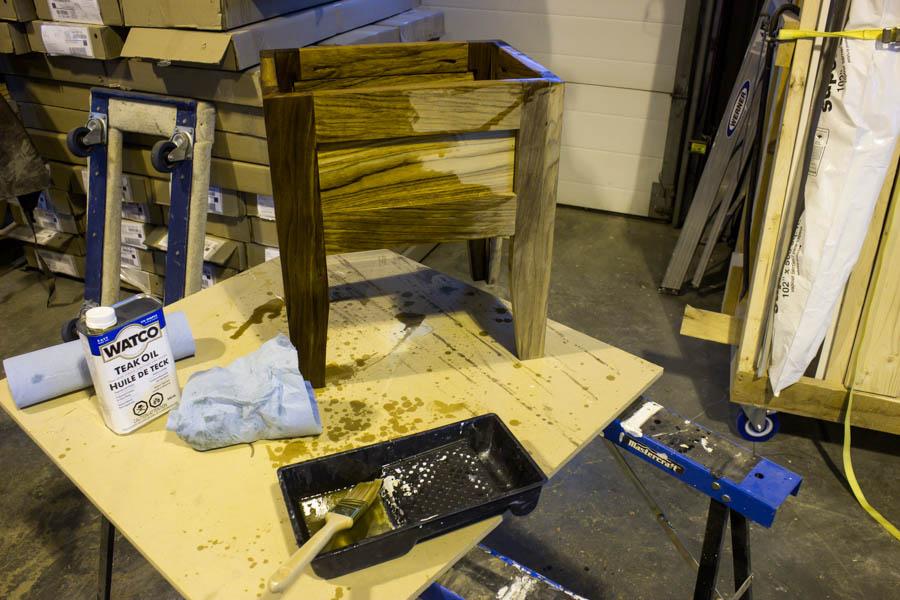Bathroom Stool
By Love Create CelebrateA beautiful bathroom stool with hidden storage for bathtub toys.
Directions
-
Layout and Cut Components
Following the attached plans, mark out your cuts on your piece of lumber, we used 1" x 8" teak x 14' long. Cut out all the parts as per the material list in the plans. Once cut lightly sand all the pieces down.
*Part "C" slightly larger (approx 1/4") as you want to ensure a tight fit when installing them latter on - actual size should be closer to 14 1/4".
*The top boards lengths on the material list are about 1/2" longer so that you can square up the ends once the glue sets. Final length should be 16 1/2"
-
Groove pieces A and B
Next is to prep the pieces that hold the inset side panels. I used my Kreg router table to cut the 1/2" by 1/2" groove into all the pieces as per the drawings.
-
Groove E and F - Step 1
Next is to cut a groove in the areas on the leg that hold the inset side panels. I used my Kreg router table and cut the 1/2" by 1/2" groove into all the pieces as per the drawings. If you have a fence with stops on your router table you can use them to set the distance you need to cut to ensure all the grooves are the same.
*Note this groove is NOT along the entire edge so you will need to be careful where it starts and stops.
-
Grove E and F - Step 2
Due to the plunge cut on pieces E and F I used a chisel to clean out the corners and remove the radius from the router.
-
Cut Bevel on legs
Take your 8 pieces for the legs (parts "E" and "F") and cut the bevel detail on the bottom of the leg as per the drawings. I used a table saw to complete these cuts.
-
Glue legs together
Now that you legs have the angle on the bottom cut out and the groove cut, do another light sand. Glue and clamp the "E" and "F" pieces together, take note of the orientation of all 4 legs on page 1 of the drawings. Be sure to use a wood glue that is good in a water environmental as the stool may get wet. This is also the reason Teak is being used for this project as it is naturally water resistance and very durable in wet conditions.
-
Drill Pocket holes
Taking the "A" and "B" rail pieces, drill the pocket holes on the ends as noted in the drawings.
-
Assembly of Stool frame
Once your legs have had time to let the glue set (following the manufactures recommendation on the glue you are using) give the legs a light sand again and be sure to remove an excess glue.
Place the "A", "B", "E", and "F" pieces as per the layout shown in the drawings. I also glued the ends of the "A" and "B" boards prior to screwing. Clamp the pieces down to the your table or work bench and screw the pieces together. I used 1-1/2" pocket screws as the material I was using was 1" (7/8" actual) thick.
You K4 jig has chart for settings for the K4 jig, drill bit, and screw size for the thickness of material you are using.
-
Cutting of Panels D and E
Now that your frame is assembled you can cut the panels for in between the rails and legs. To do this I cut the panels down to the dimensions noted in the drawings. I than cut the 1" thick material in half using the table saw (all four sides) and saw-z all to finish the cut (your table saw blade may not cut all the way through, using a saw-z all with all long blade you can cut the material in the middle your table saw blade couldn't reach.
Once the cut is complete sand all sides to a smooth finish .
-
Install Panels D and E
Now that the pieces are cut and sanded you can glue and place the panels in between the legs and rails. I flipped my clamps so that they could "push out" and clamp the panels into place from the inside of the box
-
Prep Bottom Slats for install
In step 1 part "C" was cut to size. Take the 6 slats and run them through your router table. Using a 1/8" dia router bit cut a radius on the long edges of all 4 sides of the slats.
This could also be done with a sander, however you will have more control with a router.
-
Install slats
I measured and cut each slat to length to ensure it had a nice tight fit. Glue and clamp your slats into place, I made a 7/8" thick block out of scrap wood to space the slats along the bottom. I had to adjust the spacing slightly (as the actual gap is a nice nominal fraction) so the gaps varied from 7/8" to 1" thick.
-
Glue top
We cut 4 pieces of Teak down to 3 1/8" wide x 17" long. I than glued all the edges, clamped vertically and horizontally and let the glue set. These boards will make the top of the stool.
-
Finish Top
Once the glue has set, sand down all the faces of the board to remove any edges/ridges and excess glue. Your end product should look like one single board. Taking a measuring tape and square, mark out the perimeter groove to be cut and removed.
This groove will hold the lid in place once cut.
-
Cut Groove in top
Take the board and set your blade on your table to the correct groove depth and complete your first cut on all four corners (board sitting vertically up).
Once all 4 sides have been cut, place the board flat on the table saw and set the table saw fence and depth of cut as per the details on the drawings (see extras tab). Cut all 4 sides.
This should result in the middle portion of the board being the original thickness and the outside edge being approximately 1/2 the original thickness.
-
Finish Top
Do a test fit, the top should sit on the stool with the grooved area sitting tightly against the outer rails and tops of the legs. If the underside doesn't sit snugly against the frame you may need to make some minor adjustments. Test the lid and take out small amounts of material at a time until the lids fits tightly within the rails.
-
Prep for Finish
Take a look at the stool prior to applying your finish. Remove any glue and sand any imperfections. Clean stool of any dust.
-
Apply Finish
Follow the Finish's Manufactures Directions for application. In my case I applied the Teak Oil using a brush and let the finish sit on the stool for 15-20 mins. I than used a cloth to remove any excess oil. Let your stool dry for the recommended period prior to using.
You stool is now complete!




